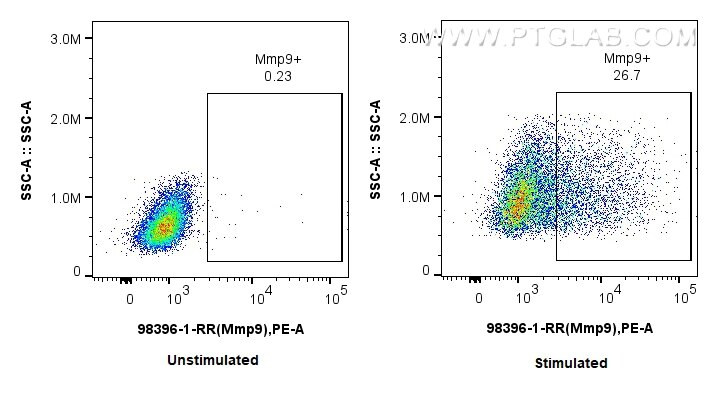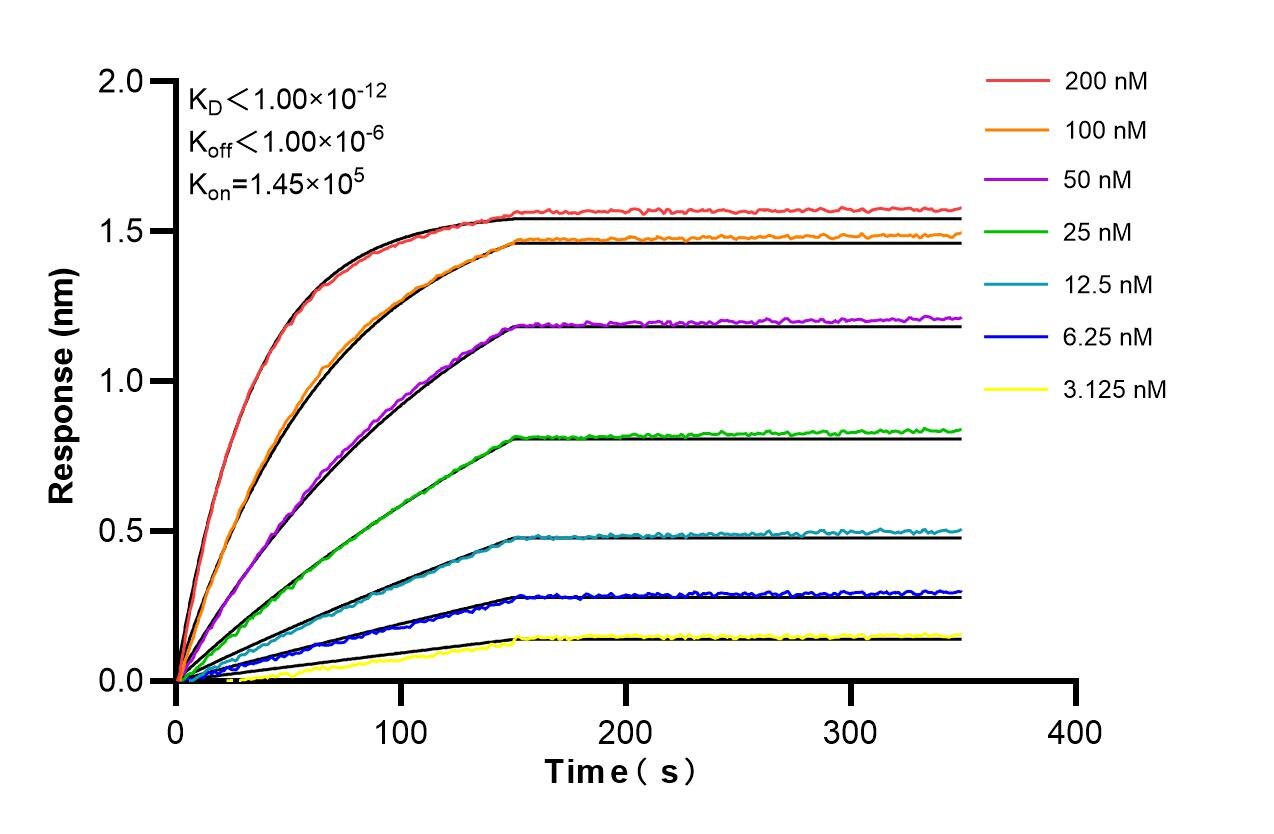Validation Data Gallery
Tested Applications
| Positive FC (Intra) detected in | LPS and Brefeldin A treated RAW 264.7 cells |
Recommended dilution
| Application | Dilution |
|---|---|
| Flow Cytometry (FC) (INTRA) | FC (INTRA) : 0.13 ug per 10^6 cells in 100 μl suspension |
| This reagent has been tested for flow cytometric analysis. It is recommended that this reagent should be titrated in each testing system to obtain optimal results. | |
| Sample-dependent, Check data in validation data gallery. | |
Product Information
98396-1-RR targets MMP9 in FC (Intra) applications and shows reactivity with mouse samples.
| Tested Reactivity | mouse |
| Host / Isotype | Rabbit / IgG |
| Class | Recombinant |
| Type | Antibody |
| Immunogen |
CatNo: Eg0452 Product name: Recombinant Mouse MMP-9 protein (His Tag) Source: mammalian cells-derived, pHZ-KIsec-C-6*HIS Tag: C-6*HIS Domain: 20-730 aa of NM_013599 Sequence: APYQRQPTFVVFPKDLKTSNLTDTQLAEAYLYRYGYTRAAQMMGEKQSLRPALLMLQKQLSLPQTGELDSQTLKAIRTPRCGVPDVGRFQTFKGLKWDHHNITYWIQNYSEDLPRDMIDDAFARAFAVWGEVAPLTFTRVYGPEADIVIQFGVAEHGDGYPFDGKDGLLAHAFPPGAGVQGDAHFDDDELWSLGKGVVIPTYYGNSNGAPCHFPFTFEGRSYSACTTDGRNDGTPWCSTTADYDKDGKFGFCPSERLYTEHGNGEGKPCVFPFIFEGRSYSACTTKGRSDGYRWCATTANYDQDKLYGFCPTRVDATVVGGNSAGELCVFPFVFLGKQYSSCTSDGRRDGRLWCATTSNFDTDKKWGFCPDQGYSLFLVAAHEFGHALGLDHSSVPEALMYPLYSYLEGFPLNKDDIDGIQYLYGRGSKPDPRPPATTTTEPQPTAPPTMCPTIPPTAYPTVGPTVGPTGAPSPGPTSSPSPGPTGAPSPGPTAPPTAGSSEASTESLSPADNPCNVDVFDAIAEIQGALHFFKDGWYWKFLNHRGSPLQGPFLTARTWPALPATLDSAFEDPQTKRVFFFSGRQMWVYTGKTVLGPRSLDKLGLGPEVTHVSGLLPRRLGKALLFSKGRVWRFDLKSQKVDPQSVIRVDKEFSGVPWNSHDIFQYQDKAYFCHGKFFWRVSFQNEVNKVDHEVNQVDDVGYVTYDLLQCP 相同性解析による交差性が予測される生物種 |
| Full Name | matrix metallopeptidase 9 |
| Calculated molecular weight | 81kd |
| GenBank accession number | NM_013599 |
| Gene Symbol | Mmp9 |
| Gene ID (NCBI) | 17395 |
| Conjugate | Unconjugated |
| Form | |
| Form | Liquid |
| Purification Method | Protein A purfication |
| UNIPROT ID | P41245 |
| Storage Buffer | PBS with 0.09% sodium azide{{ptg:BufferTemp}}7.3 |
| Storage Conditions | Store at 2 - 8°C. Stable for one year after shipment. |
Background Information
MMP9 (matrix metallopeptidase 9), also named as Gelatinase B, is a member of matrix metalloproteinase (MMP) family. The MMP family of enzymes is comprised of critically important extracellular matrix remodeling proteases whose activity has been implicated in normal embryogenesis, tissue remodelling and many diseases such as arthritis, cancer, periodontitis, glomerulonephritis, encephalomyelitis, atherosclerosis and tissue ulceration. MMP9 is produced by a variety of normal and transformed cells including neutrophils, monocytes, macrophages, astrocytes, fbroblasts, osteoclasts and so on. Transgenic mouse models report that MMP9 contributes to skin carcinogenesis, suppresses development of experimental abdominal aortic aneurysms, and triggers the angiogenic switch during carcinogenesis.
Protocols
| Product Specific Protocols | |
|---|---|
| FC protocol for MMP9 antibody 98396-1-RR | Download protocol |
| Standard Protocols | |
|---|---|
| Click here to view our Standard Protocols |


